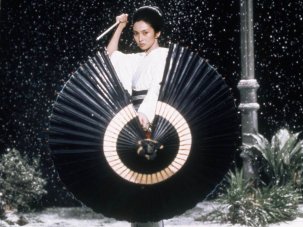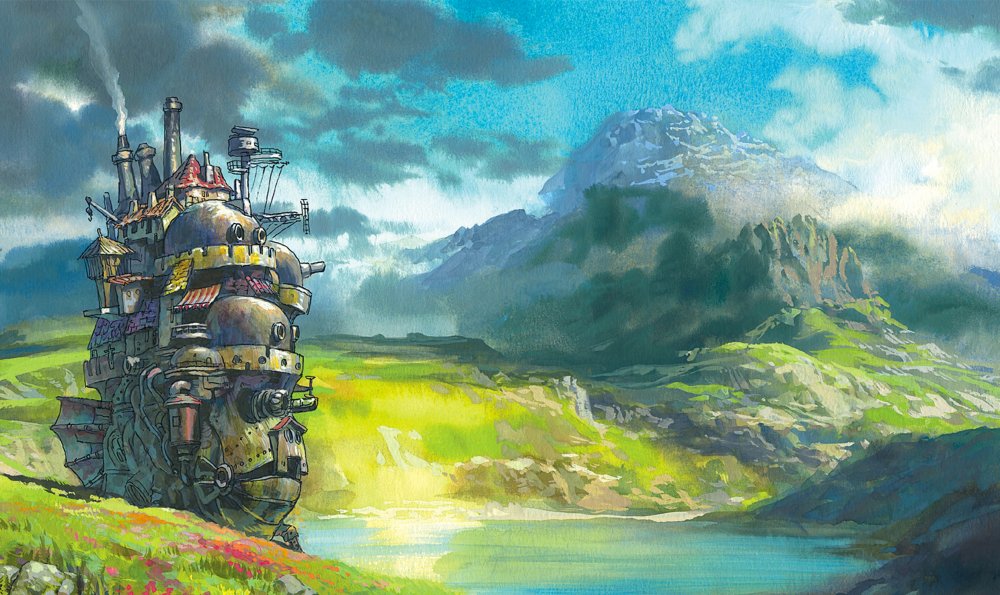
Howl's Moving Castle (2004)
Credit: © 2004 Nibariki - GNDDDT
|
The Studio Ghibli season will run at BFI Southbank in April-May 2014. Priority booking for BFI Champions opens on 3 March and BFI Members on 4 March. Public booking opens on 11 March. |
As Studio Ghibli nears its 30th birthday, and Hayao Miyazaki’s long-awaited and hotly anticipated final film The Wind Rises (2013) arrives in UK cinemas, BFI Southbank launches a two-month complete retrospective of their remarkably innovative animated features, with a number of films screening from brand new DCPs.
Ghibli was founded in 1985 by Hayao Miyazaki, fellow director Isao Takahata and producer Toshio Suzuki following the commercial success of Miyazaki’s Nausicaä of the Valley of the Wind (1984). Since then Ghibli has become synonymous with artistic integrity, producing almost 20 feature films including Grave of the Fireflies (1988), My Neighbour Totoro (1988), Princess Mononoke (1997) and the Oscar-winning Spirited Away (2001).
This complete retrospective will include a preview screening of The Wind Rises (2013) on Wednesday 23 April 23 (ahead of its UK release on 9 May), as well as a rare chance to see the television film Ocean Waves (1993) on the big screen. Known for presenting strong, independent female characters, and exploring the relationship between humanity and nature, Ghibli are unafraid to explore important philosophical issues, while never forgetting that their primary role is to entertain.
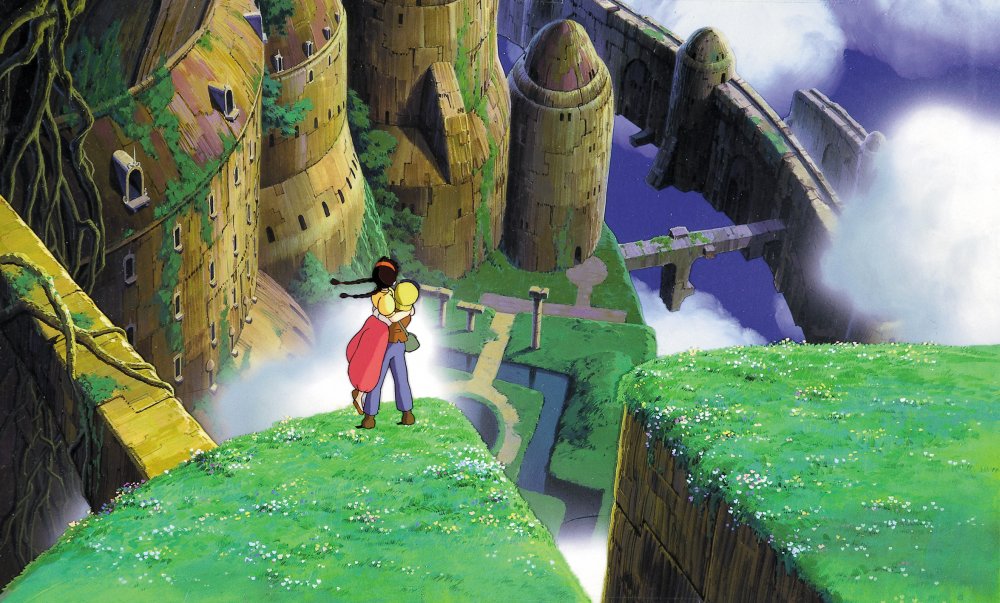
Laputa, Castle in the Sky (1986)
Credit: © 1986 Nibariki - G
Miyazaki and Takahata met during their time at Toei Doga studios in the 1960s where they worked on their first major collaboration The Little Norse Prince (1968). Despite some success working on a number of projects in the years that followed such as Conan, the Boy in the Future (1978) and Lupin III: Castle of Cagliostro (1979) it didn’t lead to further work and Miyazaki began drawing an ad hoc manga, Nausicaä of the Valley of the Wind. Part way through the series the manga’s production company commissioned a film adaptation and asked Miyazaki to direct. He brought in Takahata to produce and the result was the wildly successful Nausicaä of the Valley of the Wind (1984), included in the season to underline its importance in the Ghibli story.
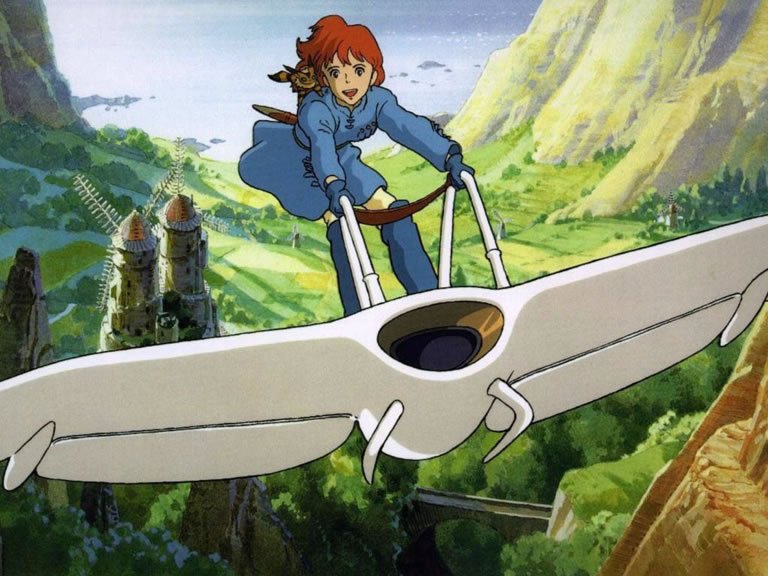
Nausicaa of the Valley of the Wind (1984)
Credit: © 1984 Nibariki - GH
The success of the film led to financial backing and Miyazaki and Takahata, along with producer Toshio Suzuki, founded a new animation studio where the directors were given absolute creative freedom. So key was this artistic integrity that when Princess Mononoke was threatened with edits by its US distributor, Ghibli sent Miramax head Harvey Weinstein a samurai sword in the post with a message attached ‘no cuts’.
1980s
Castle in the Sky (1986) was the first film from the newly formed studio. This thrilling adventure was set in a secluded mining village and influenced by a visit Miyazaki made to Wales in the midst of the miners’ strikes in the mid 80s. Then, in 1988, Ghibli agreed a deal to produce a double bill of films directed by Takahata and Miyazaki. Based on a semi-autobiographical book of the same name, Grave of the Fireflies was a devastating portrait of a brother and sister trying to survive in the aftermath of the firebombing of Kobe in 1945, and pulled no punches in its depiction of war.
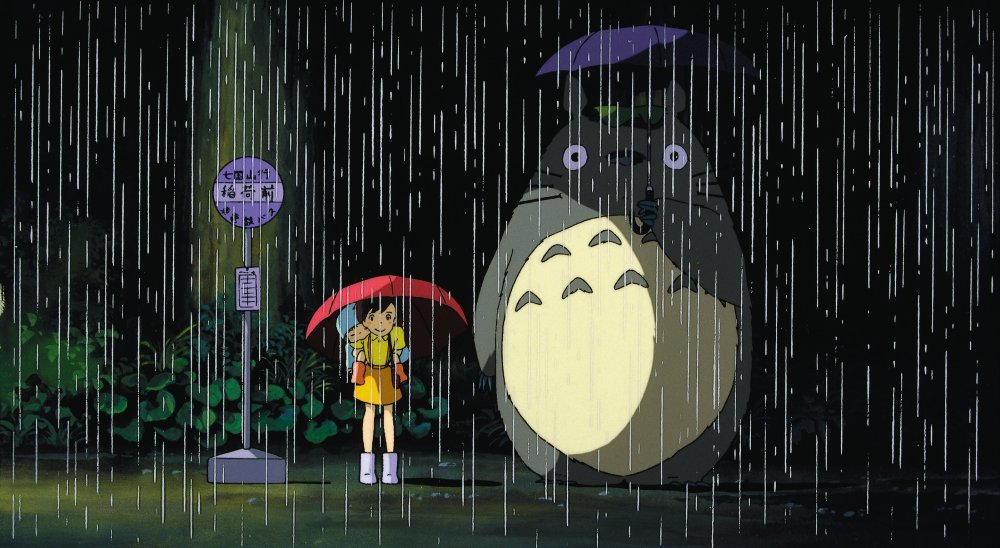
My Neighbour Totoro (1988)
Credit: © 1988 Nibariki - G
Released alongside it was My Neighbour Totoro, which would go on to become one of Ghibli’s most beloved and well known films; the titular character became the studio’s logo and even had a cameo in Lee Unkrich’s Toy Story 3 (2010). My Neighbour Totoro tells the story of two sisters who move to the country to be close to their ailing mother. Before long they realise that they aren’t alone and the girls are whisked away on a magical journey where they board a ‘catbus’ and share adventures with their new friend Totoro. Another film about childhood followed: Kiki’s Delivery Service (1989) represented a major breakthrough in the studio’s fortunes as Japan’s highest grossing film of 1989 and told a charming story of a young witch who leaves home accompanied by her talkative cat Jiji.
1990s
Conscious of the need for succession planning Miyazaki and Takahata were keen to develop new talent within the studio so they asked Tomomi Mochizuki to direct the studio’s first TV outing, a sweet tale of high school romance and friendship Ocean Waves (1993). Takahata’s Pom Poko (1994) introduced audiences to the mischievous raccoon dogs the Tanuki, who are forced into action when developers threaten to destroy their forest habitat and represents one of the first Ghibli films to focus on a strong ecological message.
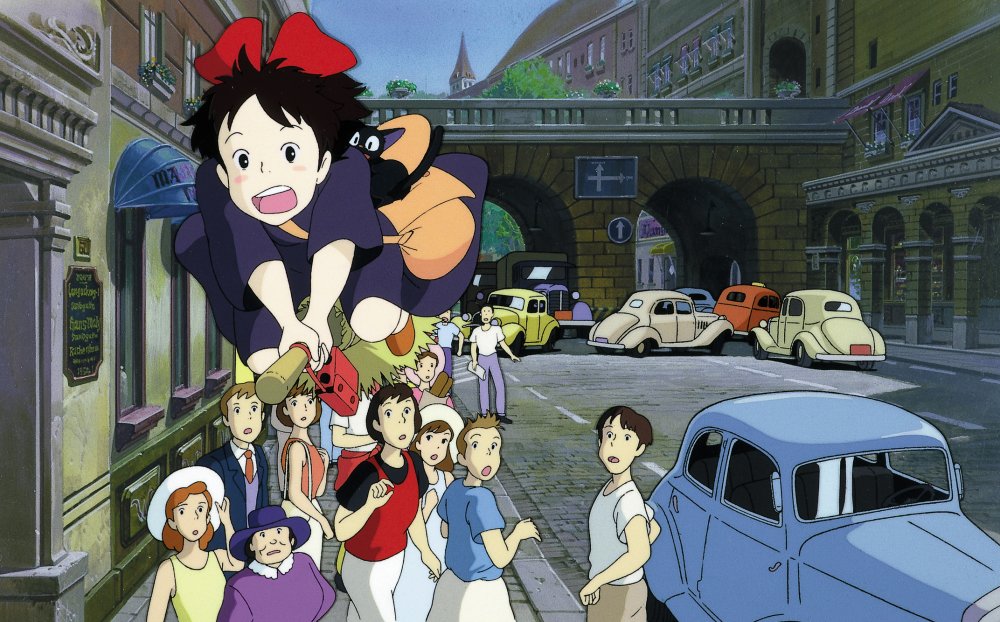
Kiki's Delivery Service (1989)
Credit: © 1989 Eiko Kadono - Nibariki - GN
One of Ghibli’s most critically acclaimed films Whisper of the Heart (1995) followed; Miyazaki wrote the screenplay but handed over directorial reins to Yoshifumi Kondo, who was widely-tipped as the future of the studio until his unexpected death a few years later. Miyazaki’s epic tale of a war between animal gods and humans Princess Mononoke followed in 1997 and was the film that really put Ghibli on the map internationally.
2000s
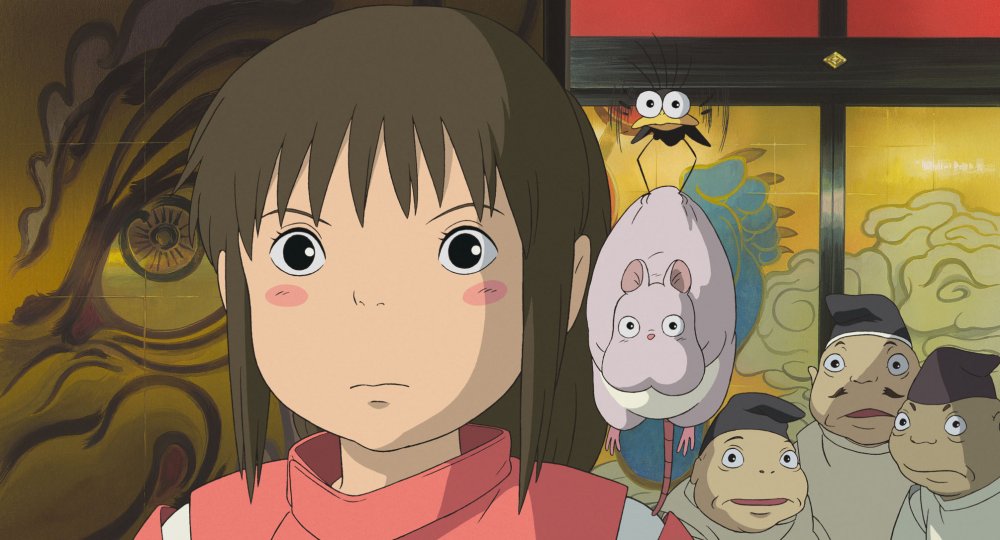
Spirited Away (2001)
Credit: © 2001 Nibariki - GNDDTM
Following the international success of Princess Mononoke, Ghibli released the award-winning smash hit Spirited Away (2001). With a nod to Alice in Wonderland and to Shintoism, Spirited Away is Miyazaki’s masterpiece, and is the only film not in the English language to have won an Academy Award for best animated feature. Spirited Away will also be screened as part of a BFI Film Funday, where children can take part in a workshop to create their very own cast of ‘spirit-gods’.
Miyazaki’s next film was Howl’s Moving Castle (2004), an adaptation of a book by Welsh writer Diana Wynne Jones. The film tells the story of 18-year-old Sophie, who is cursed by the Witch of the Waste and transformed into her 90-year-old self. Then four years later came an abstract take on The Little Mermaid: Ponyo (2008) is a beautifully-animated treat for all the family and once again touched on pressing environmental issues.
2010s
Mary Norton’s The Borrowers is given the Ghibli treatment by their youngest director Hiromasa Yonebayashi in Arrietty (2010). Like the little girl in Norton’s books, Arrietty is a tiny person who lives beneath the floorboards with her family until an accidental meeting with a human brings about a chaotic series of events. Hayao’s son Goro Miyazaki took the helm in From Up on Poppy Hill (2011); set in rural Yokohama just before the Tokyo Olympics in 1964, this coming-of-age tale introduces us to Umi who is fighting to prevent her school clubhouse being demolished.
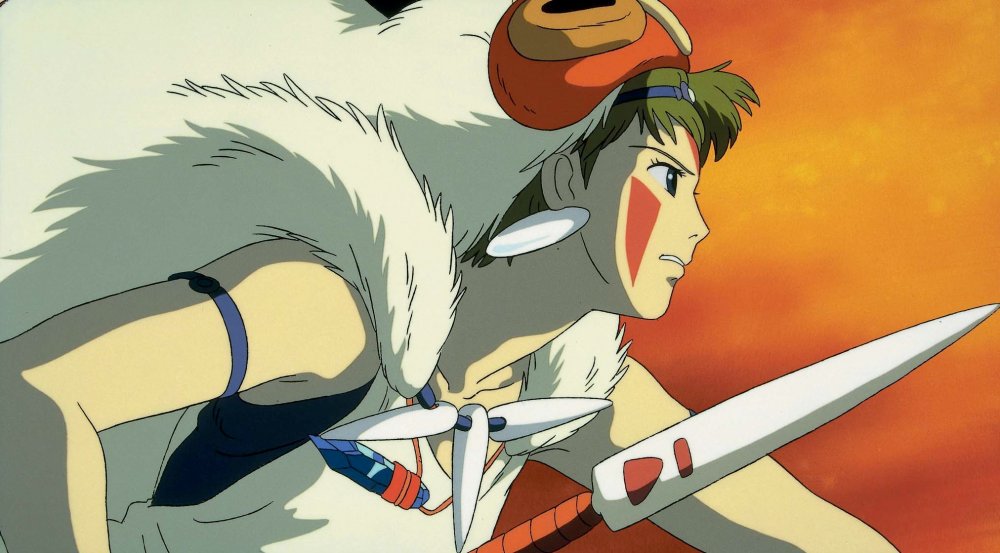
Princess Mononoke (1997)
Credit: © 1997 Nibariki - GND
After many attempts to step down from the helm, Miyazaki announced in 2013 that The Wind Rises would be his last film as director. The film is a fictionalised biography of Jiro Horikoshi, real-life designer of the notorious Mitsubishi A6M Zero fighter aircraft, who abandons his dream of being a pilot and becomes an engineer, spurred on by vivid dreams and the love of a woman. Though Miyazaki is stepping down, he leaves behind a wonderful body of work and with his son Goro, protégée Yonebayashi and Takahata himself still creatively driving Ghibli forward, the Studio’s future looks set to be stronger than ever.



